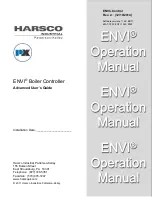
SSInClk
SSInFss
SSInRx
Q
SSInTx
MSB
MSB
LSB
LSB
4 to 16 bits
MSB
LSB
SSInClk
SSInFss
SSInTx/SSInRx
4 to 16 bits
Functional Description
1530
SLAU723A – October 2017 – Revised October 2018
Copyright © 2017–2018, Texas Instruments Incorporated
Quad Synchronous Serial Interface (QSSI)
Figure 23-3. TI Synchronous Serial Frame Format (Continuous Transfer)
23.3.7.2 Freescale SPI Frame Format
The Freescale SPI interface is a four-wire interface where the SSInFss signal behaves as a slave select. If
operating in legacy mode and using the Freescale SPI frame format, the inactive state and phase of the
SSInClk signal are programmable through the SPO and SPH bits in the SSICR0 control register. If
operating in advanced-, bi-, or quad-SSI mode, the SP0 and SPH bits must be programmed to 0.
23.3.7.2.1 SPO Clock Polarity Bit
When the SPO clock polarity control bit is clear, it produces a steady state low value on the SSInClk pin. If
the SPO bit is set, a steady state high value is placed on the SSInClk pin when data is not being
transferred.
23.3.7.2.2 SPH Phase Control Bit
The SPH phase control bit selects the clock edge that captures data and allows it to change state. The
state of this bit has the most impact on the first bit transmitted by either allowing or not allowing a clock
transition before the first data capture edge. When the SPH phase control bit is clear, data is captured on
the first clock edge transition. If the SPH bit is set, data is captured on the second clock edge transition.
23.3.7.3 Freescale SPI Frame Format With SPO = 0 and SPH = 0
Single and continuous transmission signal sequences for Freescale SPI format with SPO = 0 and SPH = 0
are shown in
and
.
NOTE:
This is the only Freescale SPI frame format configuration that can be used when operating in
advanced, bi-, quad-SSI mode.
NOTE: Q is undefined.
Figure 23-4. Freescale SPI Format (Single Transfer) with SPO = 0 and SPH = 0
















































